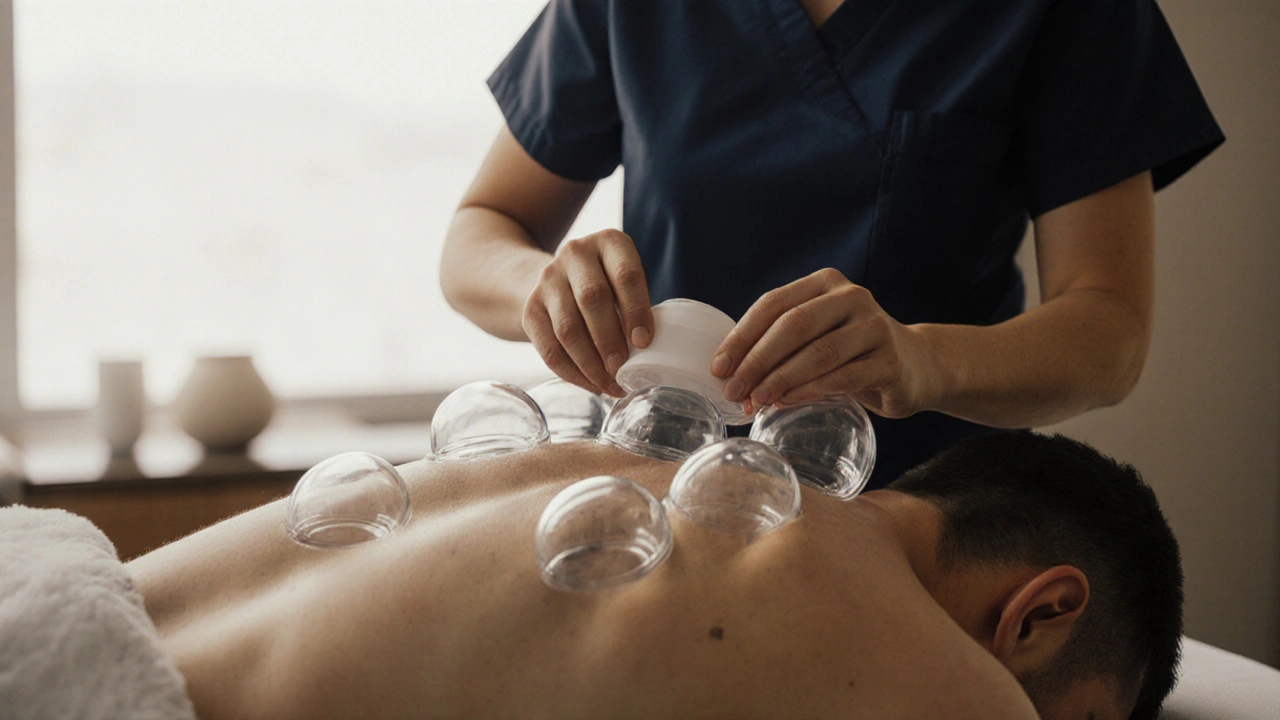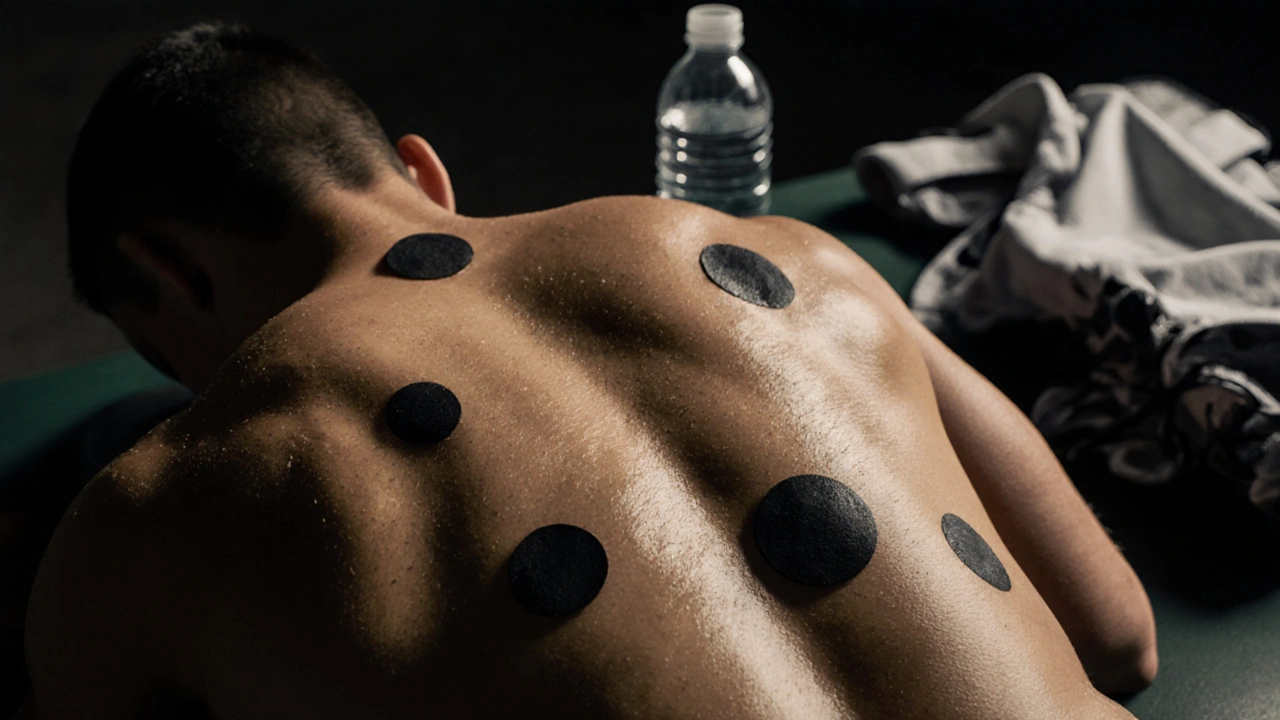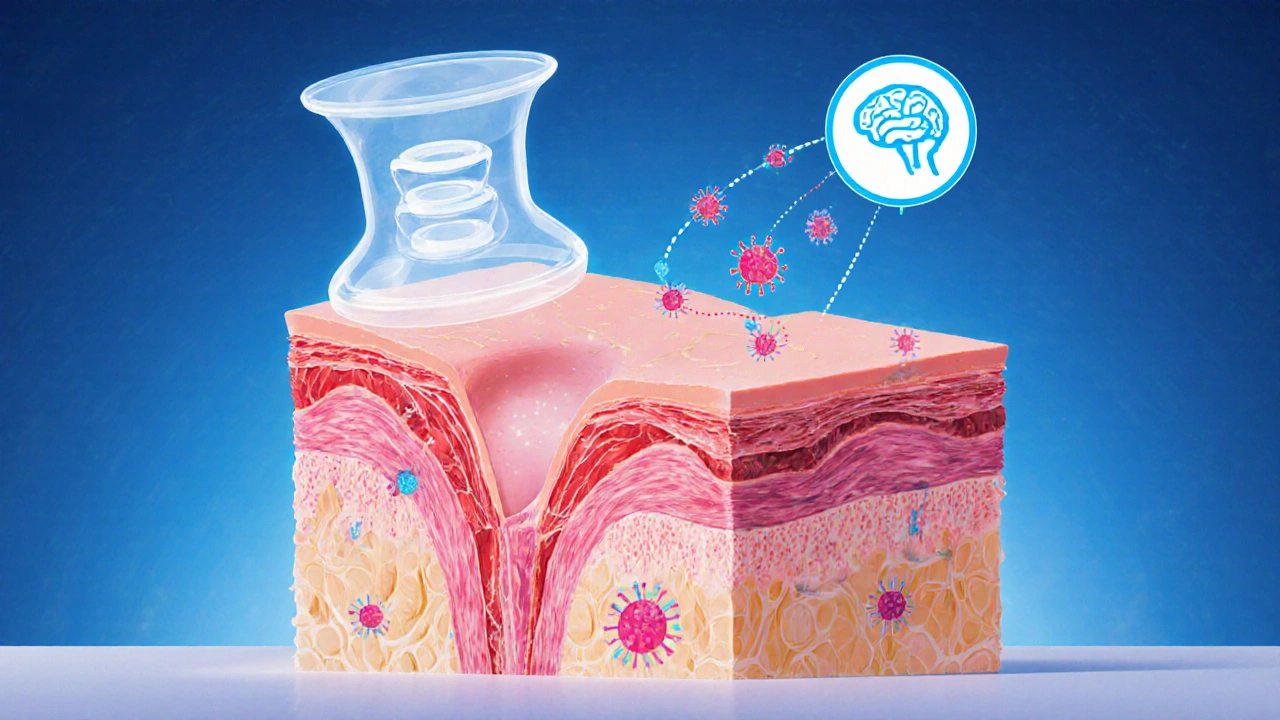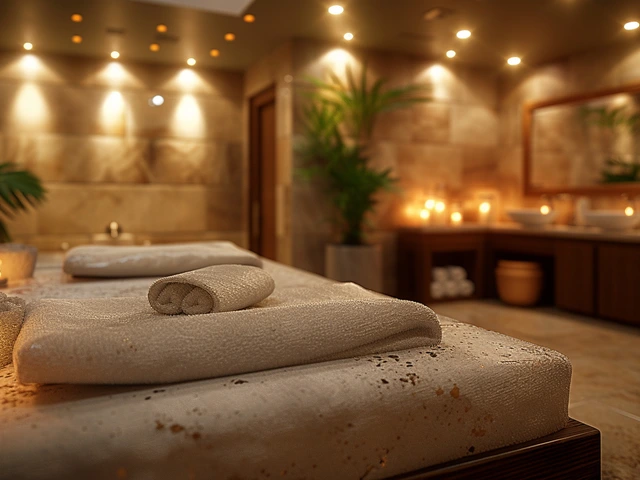The Science Behind Cupping Therapy: What Research Actually Shows

Cupping Therapy Suitability Checker
Is Cupping Therapy Right for You?
Answer a few simple questions about your health to determine if cupping therapy is safe and appropriate for you. Based on evidence from the article, this tool helps identify potential contraindications.
Please answer the questions above to see your results.
Ever seen someone with circular bruises on their back and wondered what’s going on? That’s cupping therapy - an ancient practice now showing up in gyms, spas, and even Olympic athlete recovery rooms. It’s been around for thousands of years, used in Chinese, Egyptian, and Middle Eastern medicine. But today, people aren’t just doing it because it’s traditional. They’re trying it because they’ve heard it helps with pain, recovery, and stress. The real question isn’t whether it works - it’s how it works, and what science says about it.
How Cupping Therapy Actually Works
Cupping involves placing special cups - usually made of glass, silicone, or plastic - on the skin. A vacuum is created inside the cup, either by heat or a manual pump, pulling the skin and underlying tissue upward. This creates suction. The cups stay on for 5 to 15 minutes. The result? Circular marks that look like bruises but aren’t true injuries.
Traditional practitioners say cupping clears blocked energy (qi) and improves blood flow. Modern explanations are more physical. The suction stretches connective tissue, increases local circulation, and may trigger a mild inflammatory response. That inflammation isn’t bad - it’s how the body starts healing. Blood flow brings immune cells, oxygen, and nutrients to tight or sore areas. Think of it like a gentle massage for deep tissue, but pulling instead of pushing.
There are two main types: dry cupping and wet cupping. Dry cupping is just suction. Wet cupping involves making tiny skin incisions before applying the cups to draw out small amounts of blood. Wet cupping is less common outside traditional settings and carries more risk. Most people today use dry cupping, especially in Western clinics and fitness centers.
What Does the Research Say?
There’s no magic here - just biology. A 2018 systematic review in the Journal of Traditional and Complementary Medicine analyzed 164 studies on cupping. The researchers found moderate-quality evidence that cupping helps with chronic neck and back pain. It worked better than no treatment, and sometimes as well as massage or physical therapy.
A 2022 randomized trial in BMJ Supportive & Palliative Care looked at 60 people with lower back pain. Half got cupping twice a week for four weeks. The other half did nothing. The cupping group reported 40% less pain on average after four weeks. Their mobility improved too. The control group didn’t change.
Another study from 2021, published in Complementary Therapies in Clinical Practice, tested cupping on athletes. Those who did cupping after intense training recovered faster. Their muscle soreness dropped quicker, and their blood markers for inflammation (like creatine kinase) returned to normal sooner than those who didn’t use cupping.
It’s not a cure-all. Cupping doesn’t fix herniated discs, torn muscles, or nerve damage. But for general muscle tightness, stiffness, or lingering soreness - especially after exercise - the data supports it as a useful tool.
Why Do People Feel Better After Cupping?
It’s not just the physical pull. Cupping triggers several biological responses:
- Increased blood flow: The suction opens tiny capillaries, flooding the area with oxygen-rich blood. This helps flush out metabolic waste like lactic acid.
- Local immune activation: The mild tissue stress signals the body to send healing cells to the site. Think of it like a mini-repair job.
- Nervous system reset: The sensation of pulling on the skin sends signals to the brain that can override pain messages. It’s similar to how rubbing a bumped elbow makes it feel better.
- Placebo effect: Yes, some of the benefit is psychological. If you believe it works, your brain releases natural painkillers like endorphins. But that doesn’t make it fake - placebo effects are real and measurable in clinical trials.
One 2020 fMRI study showed that cupping reduced activity in the brain’s pain-processing centers. That’s not just feeling better - that’s your brain literally changing how it interprets pain signals.

Who Should Try Cupping - And Who Should Avoid It?
Cupping is generally safe when done by a trained professional. But it’s not for everyone.
Good candidates:
- People with chronic muscle tension or stiffness
- Those recovering from workouts or sports injuries
- Individuals with fibromyalgia or myofascial pain
- People seeking non-drug pain relief
Avoid cupping if you:
- Have thin or fragile skin (common in elderly or people on blood thinners)
- Have open wounds, burns, or active skin infections
- Are pregnant (especially on the lower back or abdomen)
- Have bleeding disorders or are on anticoagulants like warfarin
- Have a pacemaker or other implanted medical device (suction near the chest could interfere)
Always tell your practitioner if you’re on medication or have a medical condition. A good therapist will adjust pressure or avoid certain areas.
What About the Marks? Are They Harmful?
The dark circles left behind are the most talked-about side effect. They’re not bruises in the traditional sense. Bruises happen when blood vessels break and leak. Cupping marks are caused by capillaries dilating and minor blood pooling under the skin - like a reverse bruise. They fade in 3 to 10 days, usually without pain.
They’re not dangerous. But they can be embarrassing if you’re wearing a tank top or swimsuit. Most people schedule sessions on weekends or before a day off. The marks are temporary, but they’re also a visible sign that the therapy is working - at least physically.
Cupping vs. Other Therapies
How does cupping stack up against massage, foam rolling, or acupuncture?
| Method | How It Works | Best For | Downsides |
|---|---|---|---|
| Cupping | Suction pulls tissue upward | Deep muscle tension, chronic stiffness | Visible marks, not ideal for sensitive skin |
| Massage | Pressure pushes tissue | General relaxation, surface muscle relief | Can be painful if too deep, requires skilled therapist |
| Foam Rolling | Self-applied pressure | Post-workout recovery, self-care | Hard to reach back or shoulders alone |
| Acupuncture | Needles stimulate nerves | Nerve pain, headaches, systemic imbalance | Needle fear, cost, less immediate physical feedback |
Cupping stands out because it works on deeper layers than massage and doesn’t require needles like acupuncture. It’s also more passive - you just lie there while the cups do the work. That makes it appealing for people who don’t want to actively participate in their recovery.

Where to Get Cupping Therapy
You can find cupping in many places now: physical therapy clinics, chiropractic offices, sports medicine centers, and even some spas. Look for practitioners with training in integrative medicine, physiotherapy, or traditional Chinese medicine. Avoid places that sell cupping kits online and tell you to do it yourself - improper use can cause burns or skin damage.
In Australia, certified practitioners are regulated through bodies like the Australian Register of Acupuncturists and Chinese Medicine Practitioners (ARACMP). Ask to see their credentials. A good practitioner will explain what to expect, check your medical history, and never push you into treatment.
Realistic Expectations
Cupping isn’t a miracle cure. It won’t reverse arthritis or fix sciatica. But for many, it’s a helpful piece of the puzzle. People who combine it with movement, hydration, and good sleep often report the best results. One client I worked with - a 52-year-old gym teacher from Brisbane - used cupping twice a week for six weeks. She didn’t stop her physio exercises. She just added cupping. Her pain dropped from an 8/10 to a 3/10. She said it gave her the breathing room to finally move without fear.
That’s the real value of cupping: it doesn’t fix the problem. It helps you tolerate it better. And sometimes, that’s enough to start healing.
Is cupping therapy backed by science?
Yes, but not in the way some marketers claim. High-quality studies show cupping helps with chronic pain, muscle recovery, and stiffness. It doesn’t cure diseases, but it’s effective as a complementary therapy for pain relief and mobility improvement. The strongest evidence is for back and neck pain.
Does cupping detox your body?
No. The idea that cupping removes toxins is a myth. Your liver and kidneys handle detoxification. The dark marks from cupping are just pooled blood and tissue fluid - not waste or toxins. Claims about detoxing are marketing, not science.
How often should you get cupping?
For chronic pain or recovery, once or twice a week is common. For maintenance, once a month may be enough. Overdoing it can irritate the skin or cause bruising that takes longer to fade. Always listen to your body - if you feel sore or bruised beyond a few days, take a break.
Can you do cupping at home?
You can buy kits, but it’s risky. Without training, you might apply too much suction, leave cups on too long, or use them on the wrong areas. Burns, skin damage, and nerve irritation are real risks. If you want to try it, start with a professional session first.
Does cupping hurt?
It feels like a strong pull or suction - not sharp pain. Most people describe it as uncomfortable but tolerable. Some feel a tingling or warmth. If it hurts badly, tell the practitioner to reduce the pressure. It should never feel like tearing or burning.
Final Thoughts
Cupping therapy isn’t new. But the science behind it is getting clearer. It’s not mystical. It’s mechanical. It’s biological. And for many people, it’s a simple, non-drug way to manage pain and improve movement. The marks might look strange, but they’re temporary. The relief? That can last.
If you’re tired of painkillers that don’t fix the root issue, or if your muscles stay tight no matter how much you stretch - cupping might be worth trying. Just don’t expect miracles. Do expect better movement, less stiffness, and maybe a little more comfort in your day-to-day life.





